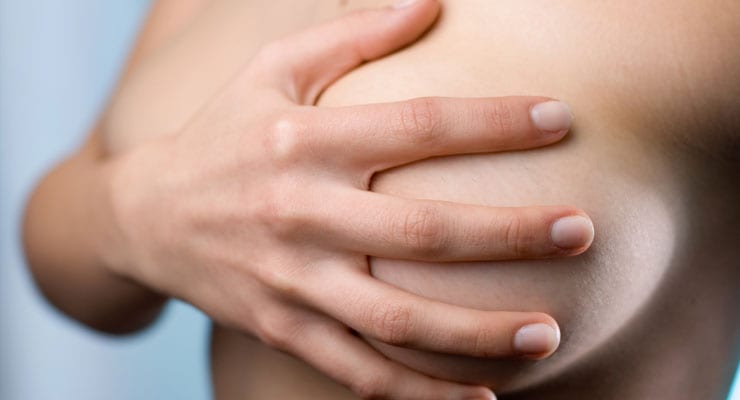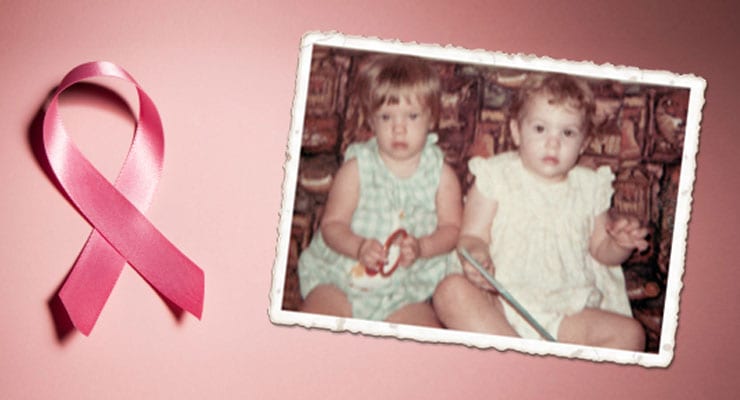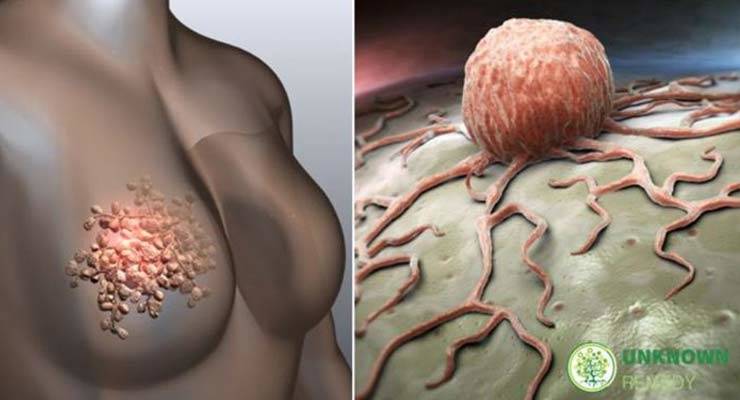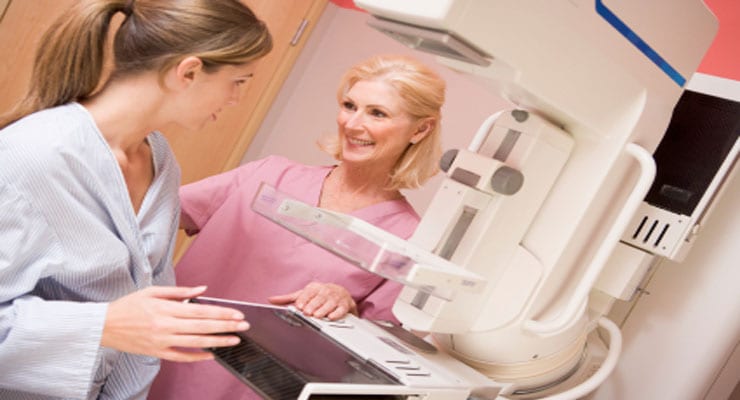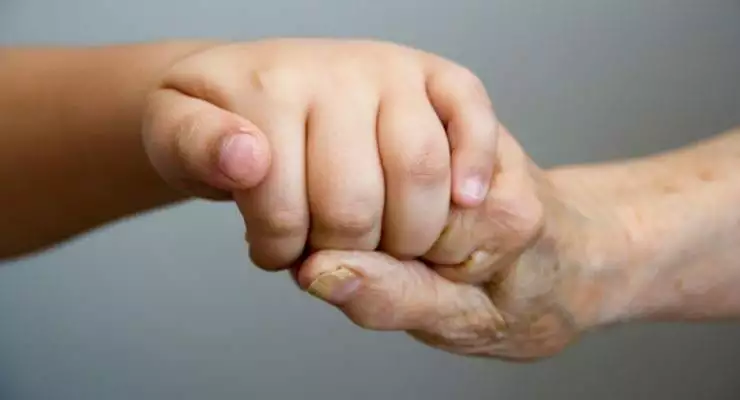I am a smart, educated woman who knows about breast cancer and the importance of early detection and knowing your family history.
I watched Nana, one of the most wonderful women in my life, die at the age of 54 from the disease. The impact of her death was the focus of the first episode of the “Supernanny” that we filmed in 2008.
ABC worked with local organizers to film my children and I cutting the ribbon to kick off the 2008 Making Strides Against Breast Cancer Walk.
The other night, the show was on for the millionth rerun and I watched that clip, remembering the filming of it as if it were yesterday. I remember how angry I was at the disease. Angry that Nana died nine months after being diagnosed, mad that one out of eight women will get breast cancer and that one in 36 of those women will die from it. Breast cancer has touched far too many of us.
The thing is that, in spite of my anger at the unfairness of the disease, I never thought that I might be one of those statistics.
I am a woman in her 40s who has nursed six kids. Between gravity and the wear and tear my breasts have been through in the past 17 years, they are far from perky and shapely like they used to be. They seem so foreign to me. I understand the importance of being aware of how your own breasts look and feel so that you will notice any changes that take place. But these dense, sagging things that I looked at in the mirror each night as I was getting in the shower were not my breasts. Not the ones I remember. I didn’t even want to know what they felt like. I always found a reason to put off doing a monthly self-exam. The next thing I knew three years had gone by.
One night I got in the shower hoping for five minutes of peace and quiet when I heard a knock on the bathroom door. Irritated and suddenly realizing there were no towels under the sink, I crossed my arms to cover and support my breasts while I opened to the door wide enough to see which one of my children thought they were experiencing such a life-ending emergency that they couldn’t give me five minutes alone. That’s when I felt it – a small lump the size of a pea in my right breast. My heart sank. I don’t even remember which child was at the door or what they wanted. I got back in the shower and felt again to see if it was really there or if it was just my imagination. But there in my breast, was a lump.
I stood in the shower, trying to wash all of the fear out of me. So many things were going through my mind. My breasts had served a purpose, which was to feed my babies, but now they could kill me.
It was a Saturday so I would have to wait until Monday to see my doctor. I had previously gotten one baseline mammogram five years ago but nothing since then. It was not a pleasant experience to have my breasts smooshed squished for a mammogram, and I hadn’t gone back for another one because my breasts were something I tried hard to ignore.
On that Monday morning, my doctor met with me and sent me right over to have a mammogram. Maybe over the past five years, the procedure has changed a little bit or perhaps just the thought that I could have breast cancer made the mammogram seem like nothing. It took 10 minutes and was not a big deal. From there I went to have an ultrasound and started the waiting game.
I felt as if I had been given a gift when they said the lump was benign. I also learned that the density of my breast from nursing six children would make it more difficult for me to feel a lump and even for a small one to show up on a mammogram. So in the spring of 2012, I decided to have a procedure called a mastopexy.
A mastopexy removes all of the excess breast tissue. Enough breast tissue is left so that you still look like you have small breasts. For me it wasn’t about the size, but about knowing that I could feel if another lump formed.
Since I had the surgery, I have been vigilant about doing monthly self-breast exams. I know what feels normal and what does not. When I felt this most recent lump in early October, my stomach did flip-flops again and I was scared. But there was also a sense of calmness in me because I knew that if it was something, it would be in the early stages.
I approached my editors and asked them if I could share the journey as part of Breast Cancer Awareness Month. I told them I would like to bring a photographer along to document the experience.
Let’s be honest, there will never be a day when women will celebrate that it is time for their annual mammogram. But far too many women put off having a mammogram. I wanted to share what goes on in that room. A little discomfort is worth the price of living.
The day of the mammogram, I sat in the waiting room at Capital Regional Medical Center Breast Center and found myself getting nervous. My mind was processing how quickly life could change if they found something.
“I just lost my dad. I have six young children who don’t need to be afraid that they might lose their mom to this horrible disease that took their Nana. Please God, could you not let me have breast cancer?” I quietly prayed.
Our photographer, Glenn, who got the lucky job of photographing the experience, quietly took pictures during the process. The fear on my face, the worry and anxiety you see in the photos is real.
The mammogram itself was not that bad, although looking at some of the photos Glenn took, I certainly don’t look as if I am having the time of my life. You are given a gown and told to undress above the waist. The machine is in an upright position so you can stand while it is being done. The technician, Debra, talked me through everything she was doing as she positioned my breast.
The breast is pressed between two plates to flatten and spread the tissue so they can get a good picture of your breast tissue – this is the most uncomfortable part, not painful just awkward. It only takes a few seconds for the picture to be taken and then the breast is released. The plates are rotated to a different angle and another image of your breast is taken. The whole process takes about 10-15 minutes. Debra was wonderful and very calming. She said it was the first time she had ever had a writer having a mammogram done while a photographer snapped pictures.
I laughed and said, “After giving birth to six kids my modesty has gone out the window. I’ve shared my life on a morning radio show for three years, on a reality show twice and each week in a column. This is just more of my real life to share. If one woman who has put off having a mammogram decides to go get one, then it was more than worth it.”
As I was checking out, I asked the question that you can’t help but ask the technician: I asked her if she saw anything. Of course she is not allowed to say if she does, but I couldn’t help but ask. Tiffany Vause, manager/care coordinator of the Capital Regional Comprehensive Breast Center, explained how it would be read and told me when I could expect the results. The entire experience from the moment we walked into the CRMC Comprehensive Breast Center up to the time we checked out was very calming and comforting. I should have the results by Thursday or Friday, so for now we just wait and pray.
I told the children at dinner the other night, having prepared myself for lots of questions from them. But they didn’t really have any. Instead the older girls got on Google and read up on breast cancer and found the information they wanted. My 14-year-old son, a 6-foot-tall football player with the sweetest heart, gave me a hug and told me it would be fine. The next day, my 12-year-old told me she had decided that when she grows up she is going to be a doctor who finds a cure for breast cancer. And my two little ones had me spray paint their hair hot pink for Breast Cancer Awareness Month for spirit day at their elementary school.
Whatever the results are, we will pull together as a family and journey down the path together. How blessed I am that should I become afraid at any point on the path placed before us, I have six amazing children to take my hand and help lead the way.
You can reach Blythe at bnewsome@tallahassee.com.

